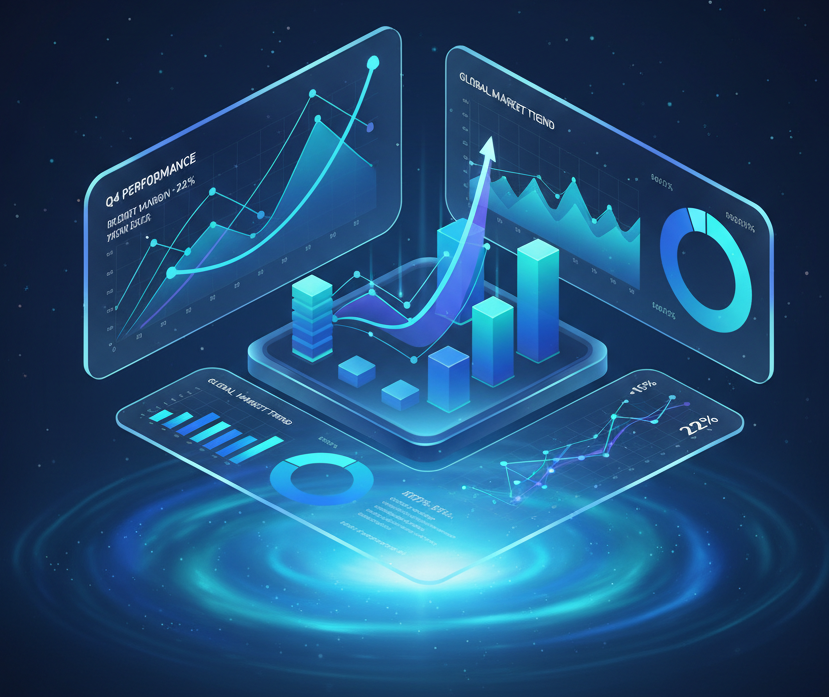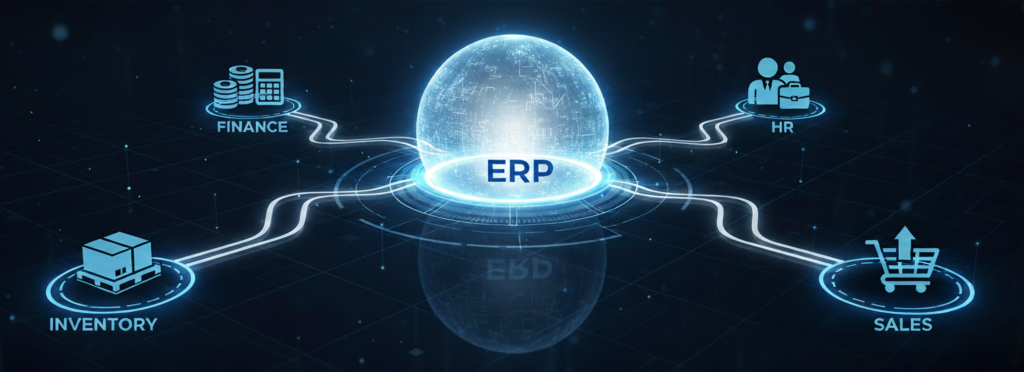What Is an ERP Dashboard?
An ERP dashboard is a screen inside your ERP system. It shows live business data from different parts of your company, like sales, inventory, or finance. It uses charts and tables to highlight key numbers and trends. You can check your cash flow, see inventory levels, or track sales without running a report.
Dashboards save time. They also reduce mistakes by pulling data directly from your ERP. That way, everyone works with the same numbers.
Why ERP Dashboards Are Useful
More companies now rely on dashboards to make decisions. Dashboards used to be just simple charts. Now they’re more advanced. They help teams spot problems, check progress, and act quickly.
A good ERP dashboard can:
- Show alerts when something goes wrong
- Help you dig into the data behind the numbers
- Let teams across departments see the same facts
- Suggest next steps using smart tools like AI
What a Good ERP Dashboard Includes
Here’s what to expect from a solid ERP dashboard:
- Real-Time Data
The dashboard updates as things change. This helps you react quickly, whether it’s a spike in sales or a low stock alert. - Role-Specific Views
Different people need different data. A finance manager sees profit and expenses. A warehouse manager sees stock levels and shipping delays. - Clear Visuals
Dashboards use simple charts, colour-coded signals, and graphs. This makes complex data easier to understand. - Drill-Down Features
You can click on a number to see where it comes from. For example, you can check which customer hasn’t paid or which item caused a delay. - Mobile Access
Most dashboards now work on phones and tablets. You can check your data anytime, anywhere. - User Access Control
Only the right people should see sensitive data. Dashboards use roles and permissions to manage this.
What’s New in ERP Dashboards (2025)
Here are a few new trends:
- AI and Predictive Insights
Dashboards now use AI to spot patterns. They can predict late deliveries, low stock, or rising costs. - Natural Language Search
You can type questions like “What were sales in Q1?” and the system will show the answer. - Self-Service Tools
Users can build their dashboards without help from IT. Drag-and-drop tools make this easier. - System Integration
Dashboards pull data from other tools too, like customer support or external databases. - ESG Tracking
More companies track environmental and social goals. Dashboards now show ESG metrics like emissions and compliance.
Common Use Cases
Dashboards help in many areas. Some examples:
- Finance: Monitor income, spending, and cash
- Sales: Track leads and pipeline
- Inventory: Watch stock, orders, and supply issues
- HR: See hiring, turnover, and headcount
- Projects: Check budgets and progress
- Executive: Get a full picture of the business
Benefits of ERP Dashboards
Dashboards help you:
- Make faster decisions
- Catch problems early
- Keep everyone aligned
- Save time on reporting
- Stay accountable with clear goals
What Makes NetSuite Dashboards Strong
NetSuite includes dashboards in all its plans. You can set them up by role—finance, sales, operations, etc. You don’t need to code. The system comes with prebuilt templates and KPIs.
NetSuite dashboards also:
- Pull data from all modules
- Work on mobile devices
- Let you drill into each number
- Let you build custom views using SuiteAnalytics
NetSuite helps teams focus on what matters. It connects data across your business so you don’t have to guess.
Final Thoughts
ERP dashboards give you a clear view of your business. They help you make better decisions and respond faster when things change. You don’t need to wait for reports or chase numbers across systems.
If you’re using an ERP and not taking advantage of dashboards, you’re missing a key tool. It’s not about fancy charts—it’s about seeing the facts, staying focused, and moving faster.
Frequently Asked Questions
What is an ERP dashboard used for?
An ERP dashboard shows live data from different parts of your business, like sales, finance, or inventory, all in one place. It helps you track key numbers and make faster decisions.
Who uses ERP dashboards?
Everyone from executives to team leads can use dashboards. Each person can see the data that matters most to their job, whether it’s cash flow, stock levels, or project status.
How is an ERP dashboard different from a report?
Reports are often static and take time to create. Dashboards show real-time data and are always up to date. You don’t have to wait or run reports to see what’s happening.
Do ERP dashboards work on mobile devices?
Yes. Most modern ERP dashboards, including NetSuite’s, are mobile-friendly. You can check your data from a phone or tablet anytime.
Can dashboards show alerts or warnings?
Yes. Many dashboards highlight issues like low stock, late orders, or high expenses so you can act fast.
Do I need coding skills to use or build ERP dashboards?
No. Most systems today, like NetSuite, offer prebuilt templates and drag-and-drop tools. You can set up or change dashboards without writing code.
Can dashboards be customized by role?
Yes. You can set different views for finance, sales, HR, or operations so everyone sees the data they need.
How do dashboards help with decision-making?
Dashboards show clear, up-to-date facts. This helps teams make quick, informed decisions without guessing or waiting for reports.
What should I look for when choosing an ERP dashboard?
Choose a dashboard that updates in real time, works with your existing tools, supports role-based views, and scales with your business.
Why are NetSuite dashboards a good option?
NetSuite dashboards are built into the system. They pull live data from every module, work on mobile, support custom views, and don’t need coding. They’re designed to help teams work smarter and stay aligned.







